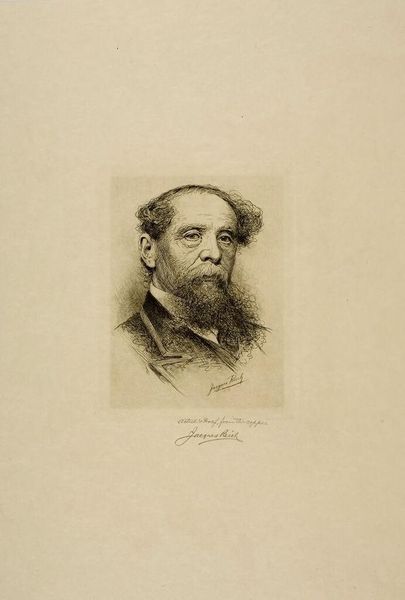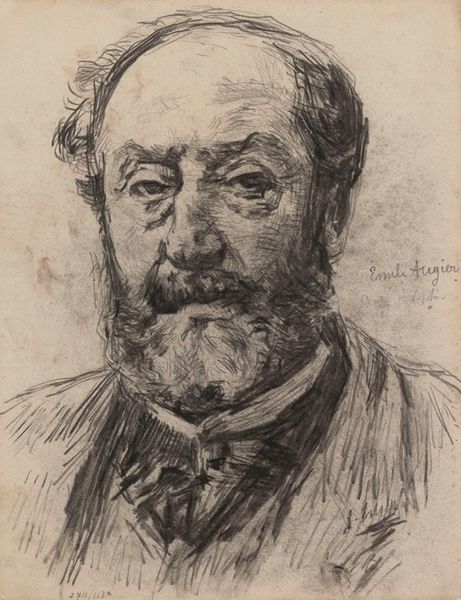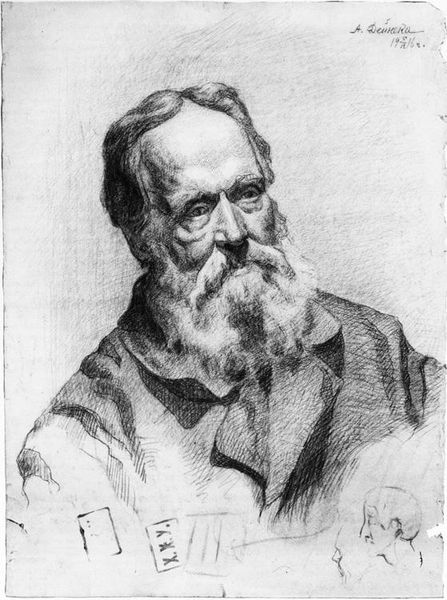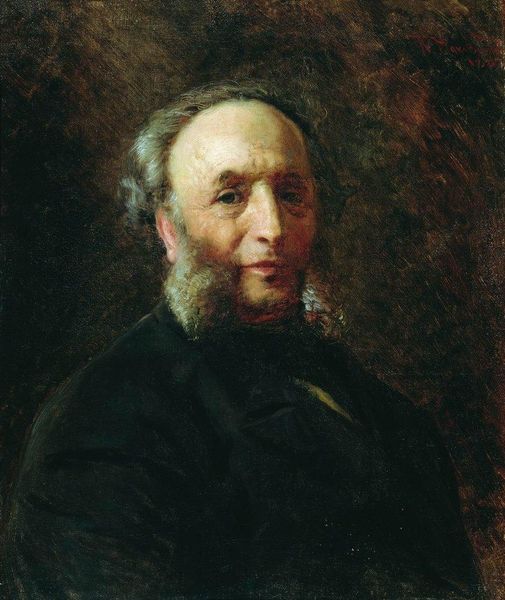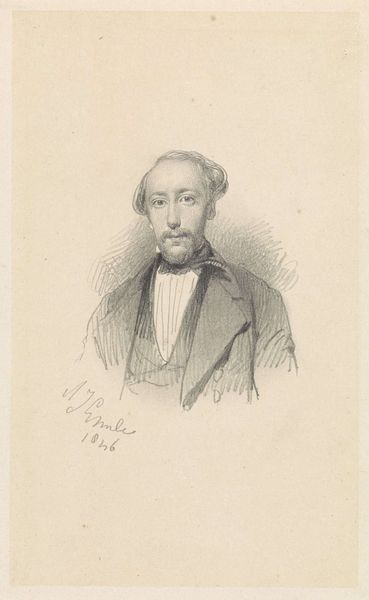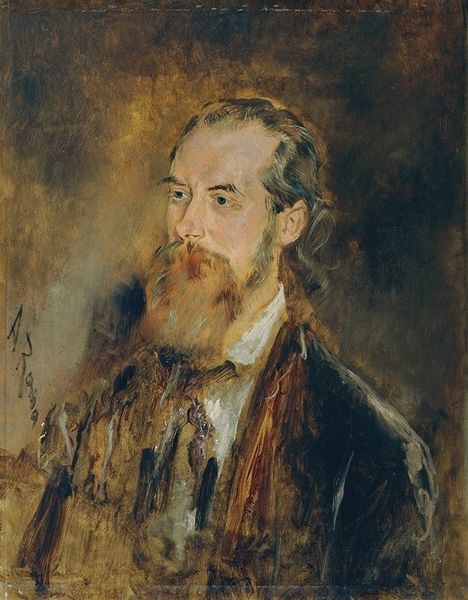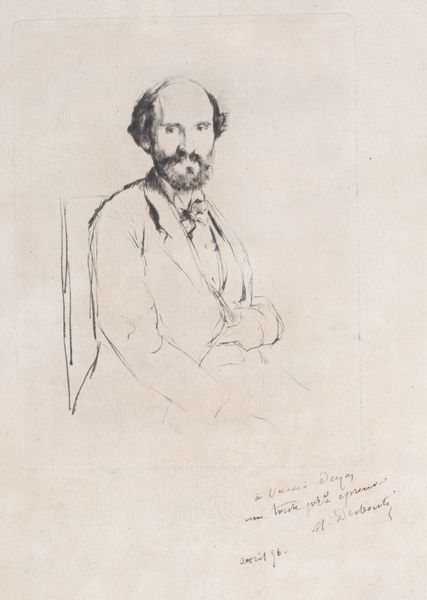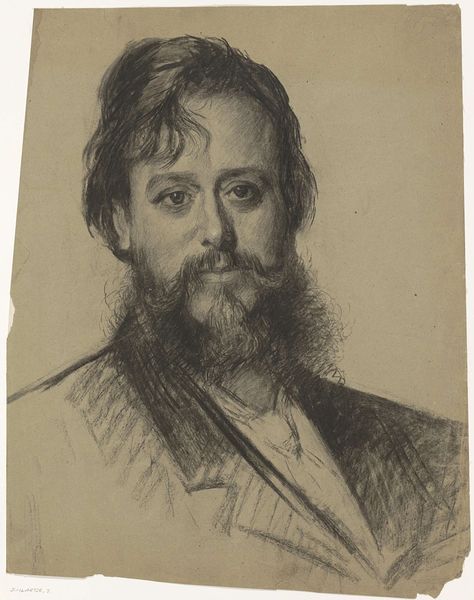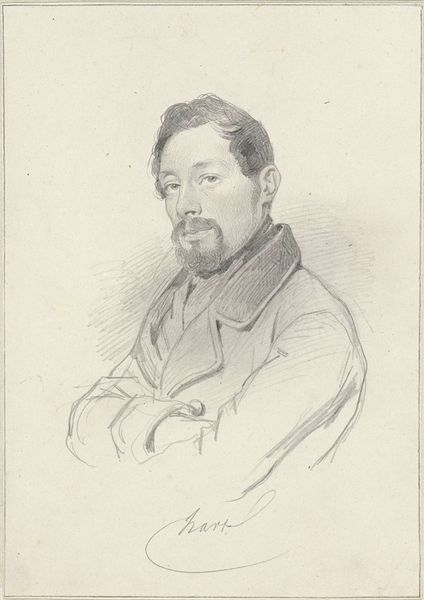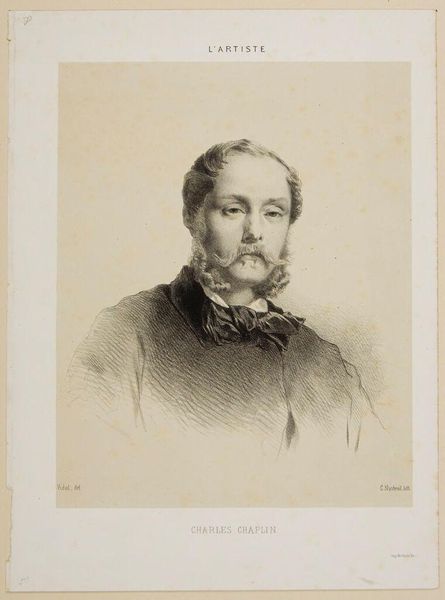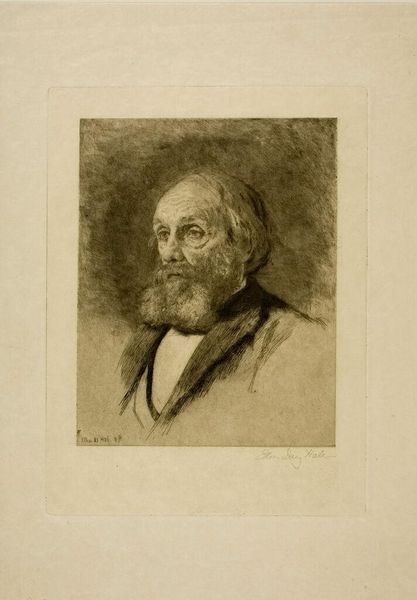
drawing, pencil
#
portrait
#
drawing
#
charcoal drawing
#
pencil drawing
#
pencil
#
realism
Copyright: Public domain
Curator: What strikes me first about this drawing is its melancholy. There’s a heaviness in the sitter's eyes, amplified by the supporting hand. Editor: You've perfectly keyed into the mood of this image. This is Nikolai Ge’s portrait of Gennady Kondratiev, completed in 1863, using graphite. Kondratiev was a celebrated baritone opera singer. Ge, interestingly, later moved away from portraiture and towards more explicitly religious subjects, informed by intense spiritual concerns. Curator: Knowing he was an opera singer lends an interesting layer. The gesture feels almost theatrical, hinting at drama, and perhaps internal conflict. Is he contemplative, fatigued, or simply posing? What could Ge be implying here about artistic temperament in Tsarist Russia? Editor: Certainly. The period in Russia, leading up to reforms in the 1860s, saw increasing interest in depictions of the common man—of laborers, peasants. Yet here we have an artist depicting another artist. The slightly rumpled clothing might subtly indicate an inclination away from the court and the aristocracy, but still stopping far short of fully embracing more explicitly democratic visions. It seems a negotiation, really. Curator: The hand against his temple can also be read as the symbolic weight of inspiration—or lack thereof. We've seen similar poses associated with Melancholia figures through the centuries. It speaks to the pressure, I think, of being a creative in a rapidly changing social landscape. And how performance itself can become an immense burden, carried privately even while presenting a public persona. The beard, too, could suggest intellectual gravity in some contexts, linking him visually to a certain class of thinkers or writers. Editor: And Ge's treatment certainly reinforces a sense of immediacy. He’s not striving for flawless academic realism, instead employing hatching and visible pencil strokes to convey emotion, imbuing the opera singer with a very human sensibility. Curator: Precisely. The slightly unfinished quality adds to the overall sense of vulnerability and interiority, don’t you think? Almost like we've captured a fleeting moment of genuine reflection. Editor: I agree. The interplay between representation and raw emotion—that’s what holds me captive within this portrait. A powerful snapshot of an artistic soul grappling with his role and his inner life.
Comments
No comments
Be the first to comment and join the conversation on the ultimate creative platform.
